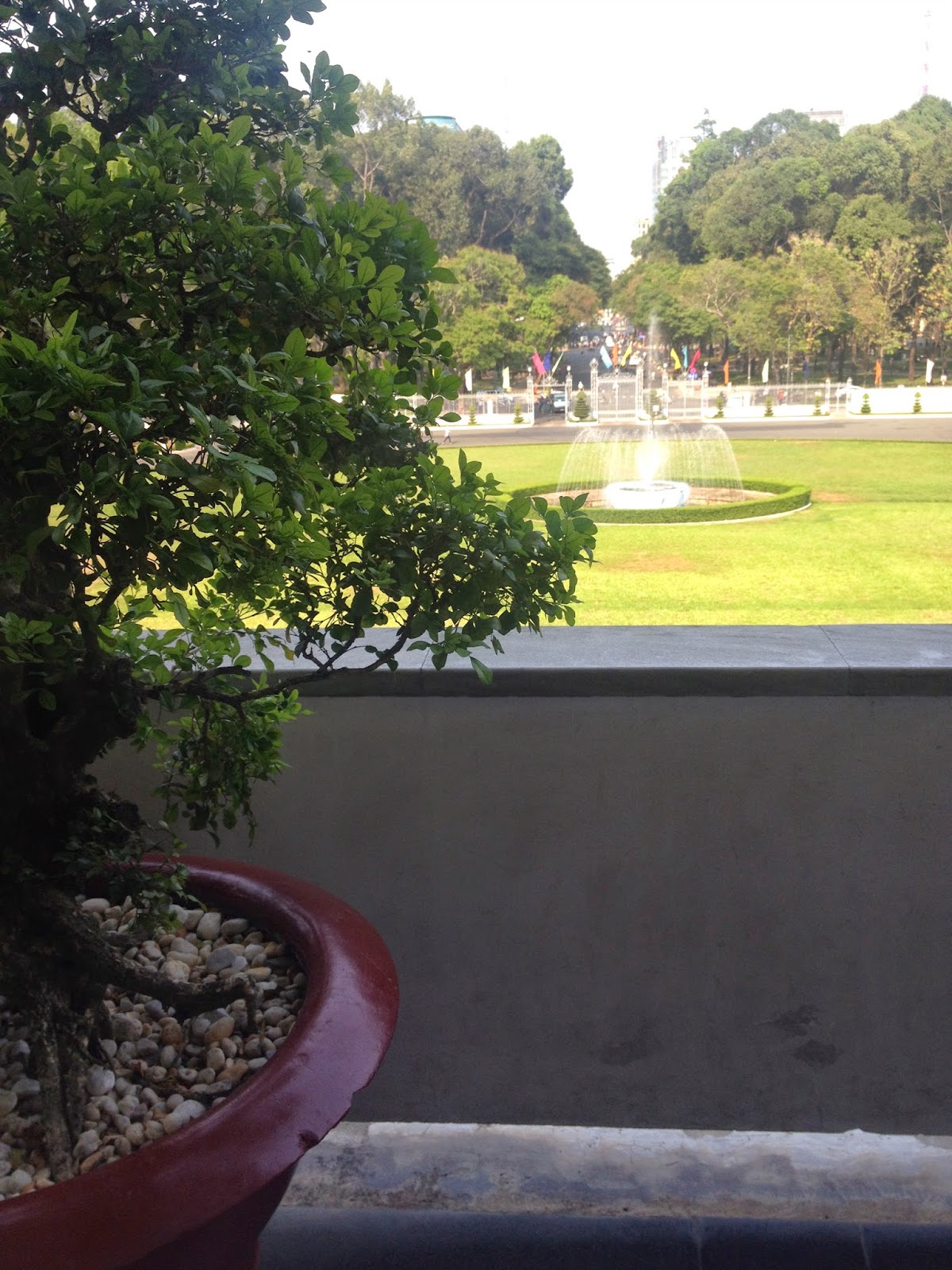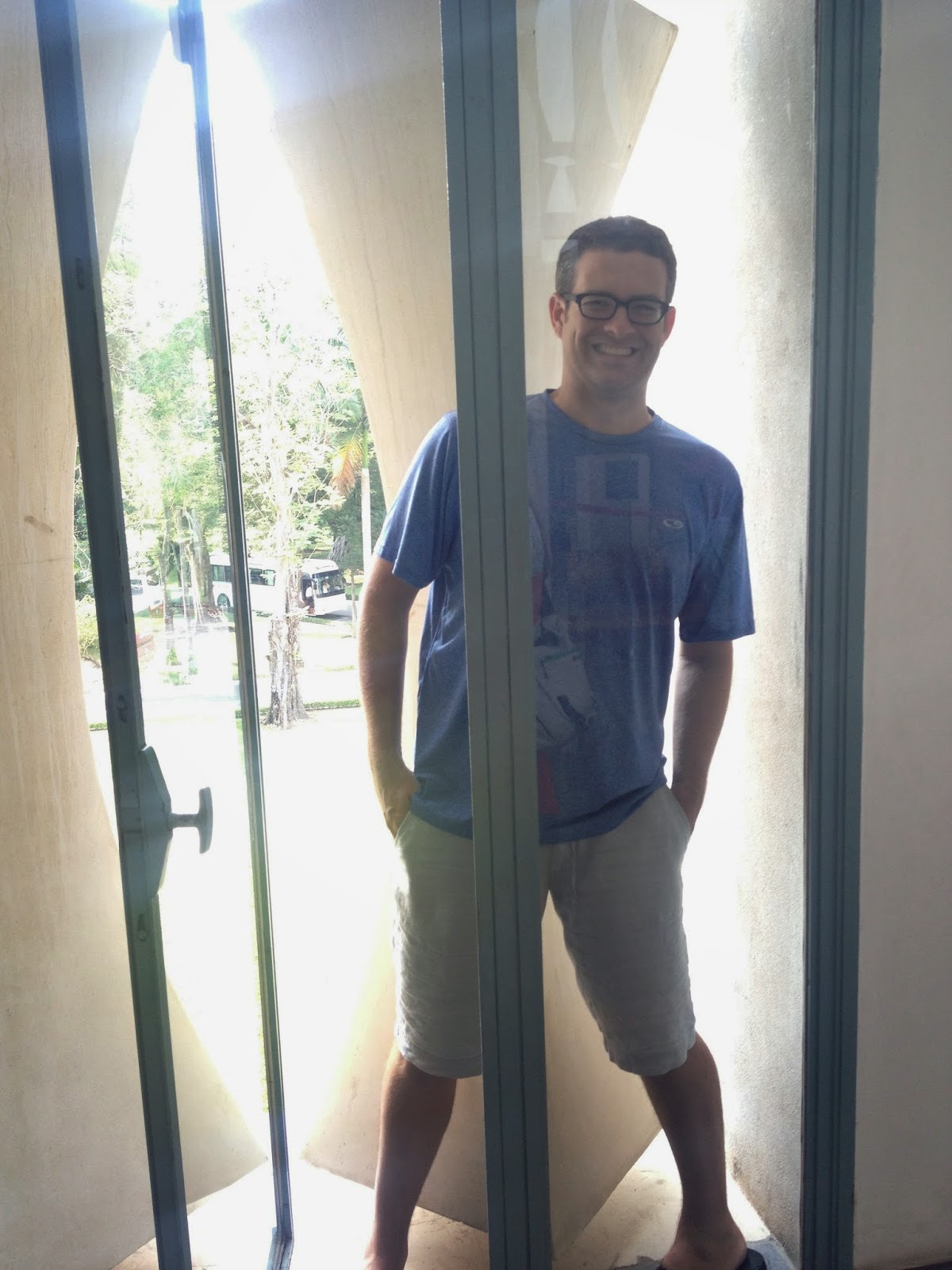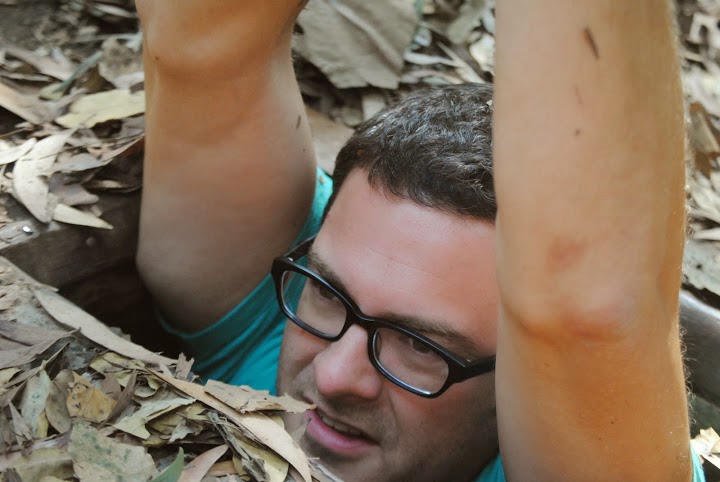For Valentine's Day weekend, we traveled to Ho Chi Minh City.
Ho Chi Minh City has a heartbeat and it is powered by scooters. HCMC's voice is a chorus of honking horns, which surprisingly come in different tones, durations, and rhythms--much like a cell phone ring tone!
Ho Chi Minh City has a heartbeat and it is powered by scooters. HCMC's voice is a chorus of honking horns, which surprisingly come in different tones, durations, and rhythms--much like a cell phone ring tone!
Vietnam's population is about 86 million people. 11 million people live in HCMC (formerly Saigon), and it feels like almost everyone drives a scooter. Crossing the street became an exercise in balancing risk, trust, and courage and waiting at a corner felt like a case study of population density.
After a quick Friday evening flight, we were settled in time to still head out for our first bowl of Pho. Pho Quynh was incredible. Previously, I've been disappointed by pho, and this was nothing like my prior experiences! The broth was spectacular. The greens were great, and the hoisin sauce was perfect. This incredibly tasty meal was ready in seconds and inexpensive.
I went in to enjoy four more bowls of pho in the next 72 hours.
My #1 Pho Quynh: around the corner from our condo. It could be my best flavor memory because I am being nostalgic, or it could have been the best.
#2 Our tour guide for the tunnels swore that this place was the best in town. It was unique, with colorful noodles made with vegetables instead of solely rice. Delicious!
#3 One last bowl on Vietnamese soil--at the airport. A delicious dinner!
#4 Was a let down. I ordered a bowl of pork pho on a shopping break at the Ben Than market. It didn't compare to the delicious beef pho and had too much black pepper for my taste. Plus I paid too much--the fact that there were no prices on the menu should have been a tip off.
#5 I have a bone to pick with 1,000 Things to Do Before You Die. I really enjoy this book--so much that it's one of the 8 books I brought to Bangkok. But on pho in HCMC, it totally missed. The book asserted that Pho Hoa has the best authentic pho. Instead it was rather bland. Boo. So if you are traveling to HCMC soon, you don't have to make a pilgrimage to Pasteur Street for good pho.
Keeping with the food theme, the best restaurant we visited was Hoa Tuc it was a delicious Valentine's double date dinner!! It was refined Vietnamese food, really tasty with piles of greens and herbs, plus it's in a picturesque little courtyard with some other good places nearby. The flavors were incredible, and I want to replicate the simple tomato, mango, avocado, and pepper salsa and the fried tofu with salt, pepper, mint, and lime. I am practicing identifying mustard greens in the market, since I found that I like this pungent lettuce. I also need to find a good hoisin sauce when we move back to Philly because it was great in my pho.
We also went on two long walks for Bahn Xeo 46A. (We walked almost everywhere; we did NOT rent scooters.) The first time we found the restaurant, it was closed. We decided to venture back the next day since my friend had raved about the French crepes with shrimp & veggies. The crepes were good and the pork vermicelli bowls and spring rolls with mustard greens were great! We also learned from a young film maker that Anthony Bourdain had visited and recommended this restaurant. If the aspiring artist's film or show is ever made, we may be on it.
I also sampled Vietnam's Starbucks, Trang Nguyen Coffee. In HCMC there seemed to be one on every other corner. The coffee drips through a fine metal filter that sits on top of your cup. It is quite strong, and thanks to the condensed milk in the bottom of my cup, also sweet and delicious.
 |
| The fried spring rolls were great everywhere we ate them! |
 |
| Pork Vermicelli Bowl & a happy man |
 |
Contrary to the theme of this post so far, eating and shopping were not the most meaningful parts of my experience in Ho Chi Minh. We visited the Jade Pagoda, one of just a few temples in the area. This Chinese pagoda was shrouded in incense and had a pond full of turtles.

 |
| Lot of turtles in the pond! |
One experience I would skip in hindsight is the water puppet show at the History Museum. If you are trying to entertain a small child, you may want to go, but if not, you may be happier if you find something else to explore. (These photos and videos will likely be more than enough.)
The most meaningful experiences I had were at the Reunification Palace, the Cu Chi Tunnels, and the War Remnants Museum.
The Reunification Palace is analogous to a giant time capsule of the 1960s. Previously, it was the South Vietnamese Presidential Palace. After the country was reunified, or when the north defeated the South, depending on your perspective, the palace was abandoned. Leaving everything, the existing furniture, helicopter landing pad, telephones, and underground bunker and command center exactly as they were in April 1975. The palace was intriguing for many reasons, and I found it fascinating that change came so abruptly to this place.
A few office spaces from the underground bunker:
 |
| When North Vietnamese tanks drove through these gates, Vietnam was reunified |
 |
| Decor and entertaining style circa 1976 |
 |
| Rooftop helicopter landing pad, with paint labeling damage from bombings |
The Cu Chi Tunnels are about 30 kilometers outside of central HCMC and extend throughout the countryside all the way to the border with Cambodia. To avoid bombing and attack, the Viet Cong lived underground in a complex system of tunnels, rooms (including kitchens, school rooms, weapons factories, and hospitals), vents, and clever disguises. Some tunnels were beneath U.S. bases! Overall, the tunnels were hundreds of kilometers in length. I looked at some spots, certain that I wouldn't fit, and was surprised when I did (the parts of the tunnels that we saw have been enlarged for tourists).
The War Remnants Museum was sobering. It taught me more about the American War (it's the Vietnam War from the U.S. perspective) than I previously knew. I now have a lot more reading and learning to do.
Prior to my visit, I thought that slavery, the slaughter of Native Americans, the use of the atomic bomb, and the internment of Japanese Americans were the greatest atrocities my country had committed. The museum has multiple galleries where I read, viewed photos, and saw the multi-generation victims of Agent Orange -- both U.S. soldiers and Vietnamese, Cambodian, and Laotian people. Another gallery documented the war correspondents and photographers who died capturing the war. It included the most important photos of each photographer and photos of the people behind the camera lenses. Now I consider the eggregious and excessive bombing with chemical weapons of Vietnam, Laos, and Cambodia and the effects on all of Southeast Asia and on American soldiers as one of the worst.
Prior to my visit, I thought that slavery, the slaughter of Native Americans, the use of the atomic bomb, and the internment of Japanese Americans were the greatest atrocities my country had committed. The museum has multiple galleries where I read, viewed photos, and saw the multi-generation victims of Agent Orange -- both U.S. soldiers and Vietnamese, Cambodian, and Laotian people. Another gallery documented the war correspondents and photographers who died capturing the war. It included the most important photos of each photographer and photos of the people behind the camera lenses. Now I consider the eggregious and excessive bombing with chemical weapons of Vietnam, Laos, and Cambodia and the effects on all of Southeast Asia and on American soldiers as one of the worst.
I hope that we all can learn from our past to leave the world a more peaceful and loving place than we found it.
 |
| Origami crane necklaces from the peace effort |











































